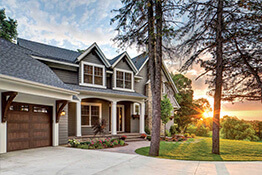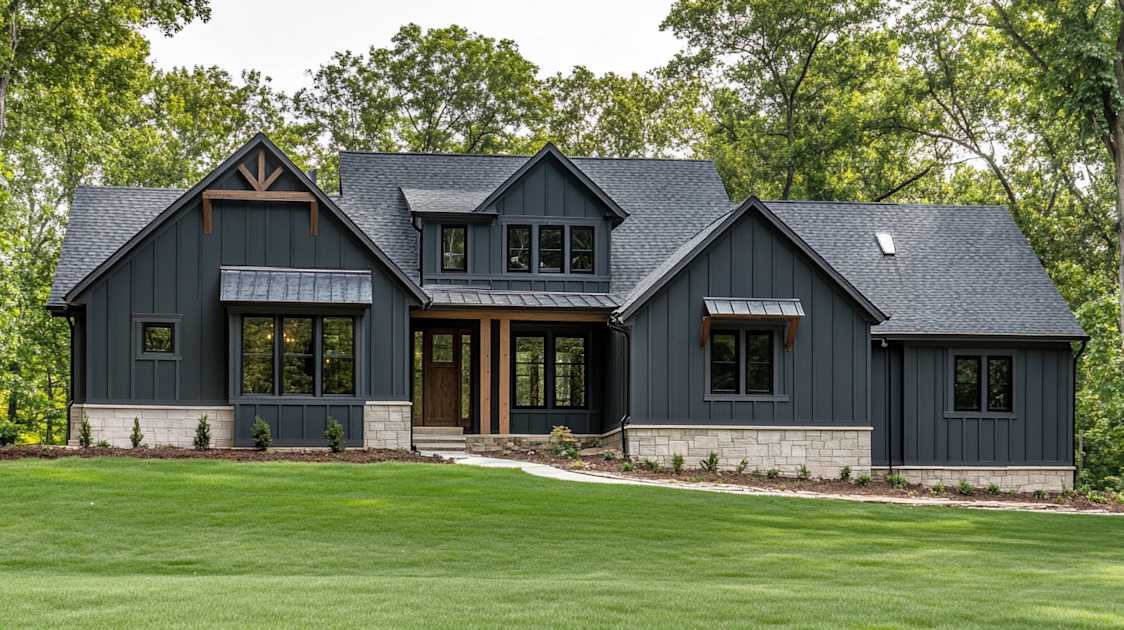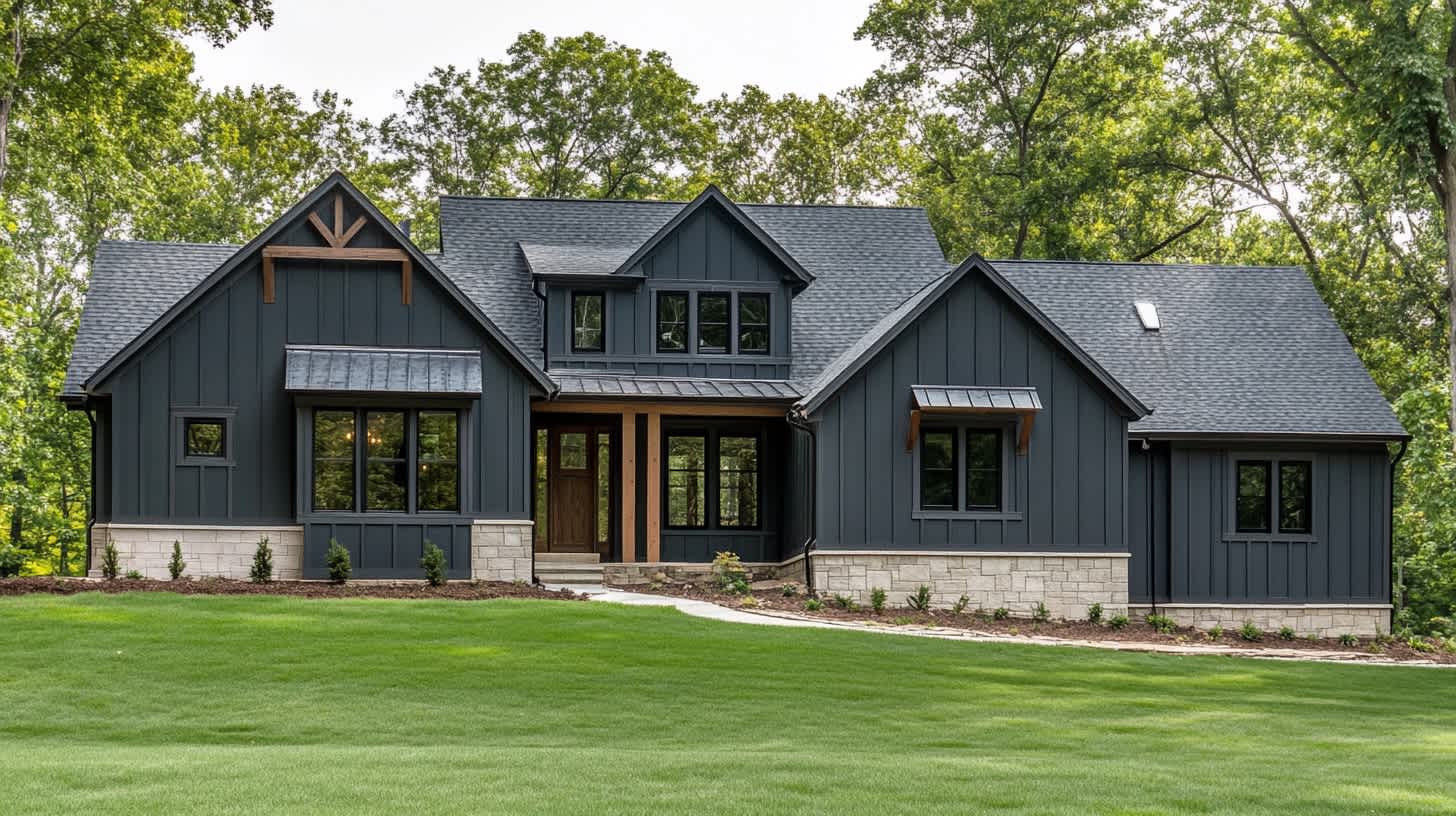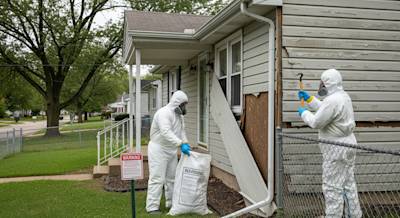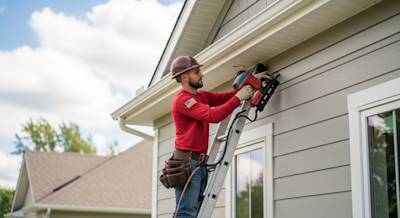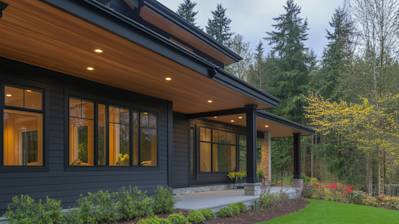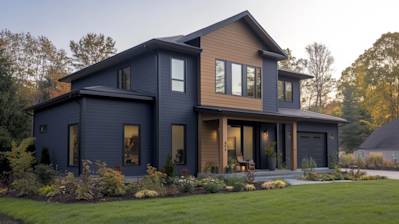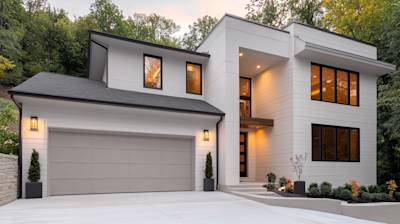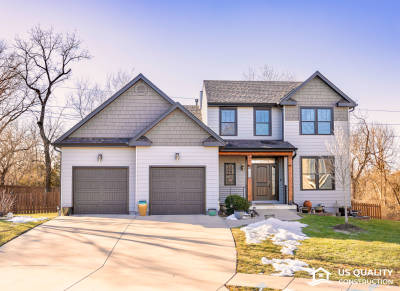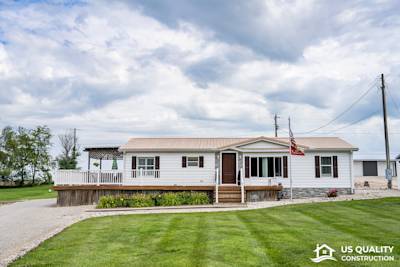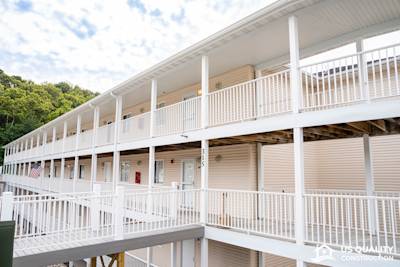In the labyrinth of home construction and renovation, siding is the exterior material applied to the outer walls of a house. It augments the aesthetic development and provides an additional shield against various weather types. The two fundamental types of siding are vertical and horizontal siding. Each has its unique charm and set of advantages, thus the perpetual Vertical vs Horizontal siding debate.
Vertical Siding: A Bold Statement
True to its name, vertical siding comprises vertical panels - boards or sheets which can dramatically transform the outlook of any house facade. The aesthetic appeal of vertical siding lies in its ability to grant a modern touch to the home, resulting in a chic, sophisticated appeal.
Bold Vertical Aesthetic
Vertical siding provides an element of height and profundity. It creates an illusion of a taller structure, which often comes into play for single-story homes or farmhouses. Vertical siding alongside crisp, clean lines can contribute to a polished modern look. The seamless blending of vertical siding with architectural elements can produce exceptional results.
Installation Requirements of Vertical Siding
An essential aspect to consider about vertical siding is that it requires a robust framework for installation, known as furring. This framework, which essentially forms a flat base, ensures proper, consistent installation of vertical sidings and aids water drainage.
Horizontal Siding: Classic yet Versatile
Horizontal siding, the more traditional of the two, spans across most homes in residential areas. With horizontal lines running across the house profile, it exudes a classic, homely appeal, suitable for individuals valuing timelessness.
Classic Horizontal Aesthetics
Horizontal siding carries an undeniable charming appeal. It works perfectly well with most architectural styles across various locations. Installation of horizontal siding can deliver the perfect balance of elegance and comfort to your home. Whether it's a colonial house or ranch-style home, horizontal siding tends to fit in seamlessly with this charm.
Installation Aspects of Horizontal Siding
The installation of horizontal siding is comparatively less complicated than its vertical counterpart. It does not require any additional framework, making it a quicker and more cost-effective option. Maintenance is straightforward, with a simple washing routine sufficing for a bright, clean exterior.
Vertical vs Horizontal Siding: Weather Resistance
The decision between vertical vs horizontal siding could rest on factors like local climate and weather patterns. Horizontal siding, due to its overlapping style, can potentially trap water, leading to possible decay or fungal issues. In contrast, vertical siding, with its adequate drainage system, ensures water runs off, preventing retention, and making it a suitable choice for areas with significant rainfall levels.
Siding Materials: Creating the Difference
Different materials like wood, vinyl, and fibre cement are available for both vertical and horizontal siding. Each material type contributes differently to durability, maintenance needs, and cost, becoming a catalyst in the vertical vs horizontal siding debate.
Frequently Asked Questions about Vertical Vs Horizontal Siding
Is There a Difference in the Installation Process?
Yes, there is a significant difference in the installation process between vertical and horizontal siding. Horizontal siding is generally easier and faster to install because it follows the natural line of a house and doesn't require furring strips. On the other hand, vertical siding necessitates a more complex installation process, as it requires additional framing, or furring strips, to create a level surface that can support the vertical orientation.
How Does Vertical Siding Differ from Horizontal Siding in Terms of Maintenance?
Vertical and horizontal siding require slightly different maintenance practices. With vertical siding, water runoff isn't as much of a concern, so mold and mildew are less likely to develop. However, vertical siding can accumulate dust and thus needs more frequent cleaning. With horizontal siding, water can sometimes collect and seep behind the siding, leading to potential damage if not maintained properly.
Does the Cost of Vertical Siding Vary from That of Horizontal Siding?
The cost difference between vertical and horizontal siding mainly lies in the installation process. Since vertical siding requires an additional step (i.e., installing furring strips) during the installation process, it can be more labor-intensive, hence potentially more expensive. However, the materials used can also heavily influence the cost. It's always a good idea to consult with a professional contractor to get a more accurate estimate.
Does Vertical Siding or Horizontal Siding Last Longer?
In terms of lifespan, both vertical and horizontal siding can last between 20 to 40 years or even longer, depending on the materials used, the quality of installation, and how well they are maintained. However, vertical siding may require more frequent cleaning due to dust accumulation, and horizontal siding may need more frequent inspections for potential water damage.
How Does the Choice Between Vertical vs Horizontal Siding Affect Aesthetics?
The choice between vertical and horizontal siding can significantly impact a home's visual appeal. Horizontal siding offers a classic and traditional look and is commonly found on residential homes. Vertical siding, on the other hand, provides a bold and unique design statement, often used on non-residential buildings or to highlight architectural features on homes.
Can I Use Both Vertical and Horizontal Siding on the Same House?
Yes, many homeowners choose to mix and match vertical and horizontal siding to create a visually dynamic and unique exterior. It's a creative way to highlight certain architectural features or break up large expanses of wall. But before you go for it, it's wise to discuss your plans with a professional designer or contractor, as the mixture of styles should be handled properly to ensure a cohesive look.
Is Vertical or Horizontal Siding More Popular?
While both types of siding have their staunch supporters, horizontal siding tends to be more common, as it gives a classic look and is easier to install. Yet, vertical siding has gained more recognition because of its modern, distinctive look and its ability to make homes appear taller.
Pros and Cons: Vertical vs Horizontal Siding
When choosing siding for your home, two main options come to mind: vertical and horizontal siding. Both have their strengths and drawbacks, so understanding these can help you make a more informed choice.
Pros of Horizontal Siding
Horizontal siding, also known as traditional or "lap" siding, has been a popular choice in residential architecture. Here are a few reasons why:
Aesthetic Appeal
-
Strong horizontal lines give a traditional, timeless look to your home.
-
Horizontal siding pairs well with most architectural styles, making it a versatile choice.
Cost-Effectiveness
-
Horizontal siding is generally less expensive to install because it requires less preparation and labor.
-
It's easier to replace just one or two damaged planks, adding to its cost-effectiveness.
Variety
-
It comes in a wide array of materials, including wood, vinyl, aluminum, and fiber cement.
-
Horizontal siding is available in different styles, such as Dutch Lap, Beaded, and Traditional Lap, providing homeowners numerous design options.
Cons of Horizontal Siding
Despite its advantages, horizontal siding isn't without some drawbacks:
Maintenance
-
It can trap water leading to rot or mildew, meaning it may require regular cleaning and maintenance.
-
Damaged sections often require professional replacement as incorrect installation can lead to further damage.
Durability
-
Horizontal siding may require repainting or re-staining every 5-10 years, depending on the material.
-
It is more prone to weather-related damage like warping or splitting.
Pros of Vertical Siding
Vertical siding, or "board and batten", is becoming more popular in modern home design. Here are some benefits of choosing this style:
Unique Aesthetic
-
Vertical siding stands out from other homes, giving your house a unique curb appeal.
-
It creates an illusion of height, making a house look taller.
Durability
-
Vertical siding tends to have a longer lifespan with lower maintenance needs.
-
It's more resistant to water damage due to its upward-facing seams.
Easy to Clean
- Due to its vertical lines, it allows dirt and debris to wash away easily.
Cons of Vertical Siding
So, what are the trade-offs when choosing vertical siding?
Installation Costs
-
Vertical siding typically requires more labor for installation, increasing the initial cost.
-
It can require more specialized skills to ensure proper installation.
Replacement
-
Replacing damaged vertical siding can be more complex than horizontal siding.
-
The entire board usually has to be replaced, making it more costly if damage occurs.
Summing Up
In the end, the choice between vertical and horizontal siding comes down to your personal preferences, budget, and the architectural style of your home. Keep these pros and cons in mind as you decide on the best option for your exterior.
Summary
So, you've learned a thing or two about "Vertical vs horizontal siding". The main difference is simply in the orientation; vertical siding runs up and down, while horizontal siding goes left to right. While vertical siding can give your home a unique, modern aesthetic, horizontal siding offers a traditional, time-tested look. The choice largely depends on your personal preference, the architectural style of your home, and the impression you wish to create. Remember that no one kind is superior to the other; each brings its own unique benefits and aesthetics to the table.
Additionally, consider maintenance needs and longevity when deciding between vertical vs horizontal siding. Generally, horizontal siding tends to accumulate water and might need frequent maintenance to prevent rot and mildew. On the other hand, vertical siding, because of its vertical flow, has less chance of water accumulation and might offer better longevity. So, if you're all for minimal upkeep, vertical could be for you.
Finally, it always comes down to personal taste and the statement you want to make with your home exterior. Whether you prefer the unique profile created by vertical siding or the classic charm of horizontal siding, the choice is all yours. And really, why not mix and match? Incorporating both vertical and horizontal siding can add a dynamic, visually appealing contrast to your home. So, in the battle of vertical vs horizontal siding, the winner is entirely up to you and your stylistic preferences.
About US Quality Construction
At US Quality Construction, based in the charming city of Kansas City, MO, we are motivated by the passion for creating sturdy, elegant, and timeless structures. Packed with years of experience and a team of skilled professionals, our company is dedicated to satisfying our clients' construction needs, big or small. We continually embrace modern technologies and methods, meshed with our traditional work ethic and commitment to superior quality. We take pride in building not only structures but long-term relationships with our clients. Choose us as your go-to partner for all your construction needs, and we promise to convert your design visions into reality.
Tags: siding, vertical, horizontal,
